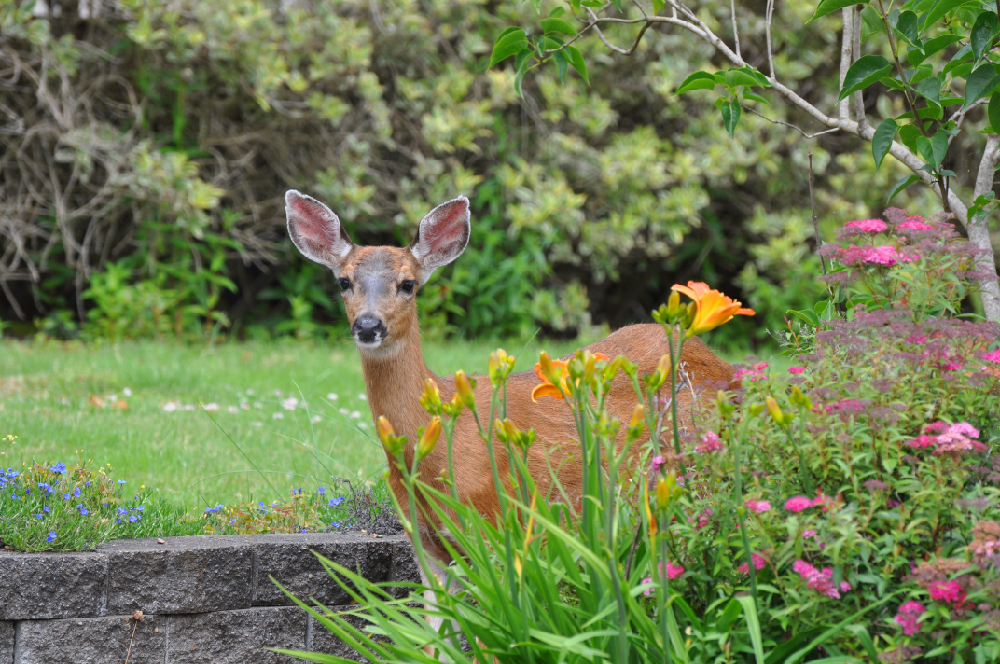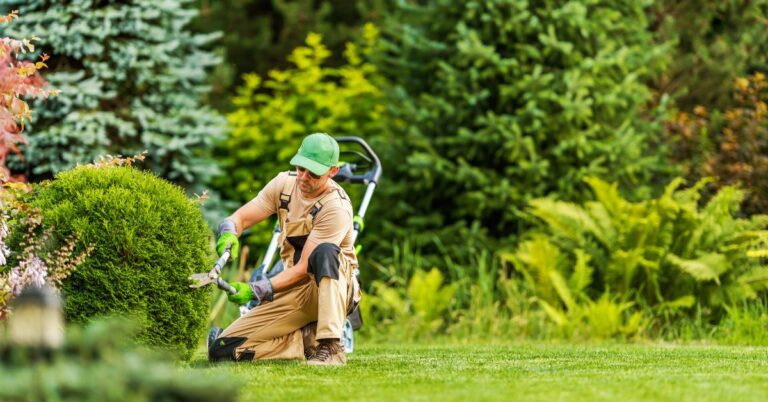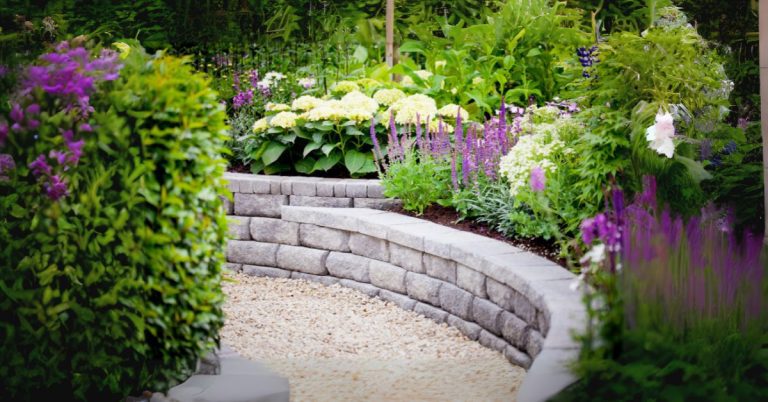Protecting Your Garden: Keeping Deer Away Safely
If you live in an area where deer are common, you know these beautiful creatures can wreak havoc on your garden. If you’re at your wits end with these pesky eating machines and are wondering how to keep deer out of your garden, you’ve come to the right place. In this article, we’ll cover ways to spot a deer invasion and 10 tried and true methods to take back your garden and keep deer at bay.
Signs of Deer Invasion
You may think it obvious to know when you have a deer problem – everything is being eaten and you live in an area with deer. Or you spot the animals snacking on your favorite perennials. But if the foraging is happening at night, you may need to look for these signs to let you know if the culprits are in fact deer.
Deer Tracks
Raisin size and greenish brown in color. Single droppings are shaped like a pellet. This is a tell-tale sign that Bambi and friends have been visiting your garden.
Deer Droppings
Look out for upside down heart-shaped hoofprints in garden soil. Each track has two pointed ends with the tips pointed forward and are about 2-3 ½ inches in length. Sometimes the “toes” or dewclaws can’t be seen in firmer soils, but often appear in softer ground.
Scrapes on Tree Trunks
Winter gardens attract male deer during rutting season. They scrape their antlers on nearby trees and shrub branches. These scrapes and scents left behind represent territorial markers to attract female deer.
Torn Leaves and Stems
Deer tear their food, leaving noticeably jagged plant leaves and stems behind. Pay attention to the top leaves and tender shoots. Deer will go for food in reach first.
Trampled Areas
You’ll see evidence of crushed plants and soil throughout your garden. Deer often eats fertilizer, so check areas that have been fertilized to see if any is missing. Deer are most active during dawn and dusk. It’s a good idea to check your garden for evidence of an invasion in the mornings.
Don’t panic if you have identified signs of deer foraging in your garden. Spotting the signs of invasion early can help you take necessary steps to protect your garden. Let’s dive into ways you can stop the destruction in its tracks without harming your ecosystem.
Five Sure-Fire Ways to Protect Your Garden Against Deer
1. Plant Deer-Resistant Plants
The number one way to protect your garden from deer is to select deer-resistant plants and flowers. Deer detest certain plants because of their texture, smell, and poisonous compounds. Annuals have these characteristics making them unpalatable for deer. Before you plant before planting, check the type of plant for these characteristics:
- Fuzzy Leaves
- Strong Odor
- Toxic Compound
- Spiny
- Tough exterior
Some examples include lavender, marigold, verbena, yarrow, and sage. While deer-resistant plants are not one hundred percent full-proof, these plants will minimize the damage.
2. Create Barriers
Placing a physical barrier in between plants and deer is guaranteed to keep them away. However, a fence is not always the most attractive and considerably costly. Most deer have the ability to jump at least seven feet or higher, so the fence would have to be significantly tall. On the contrary, if you want to fully protect your foliage fencing the area is best.
Deer Netting
Another simple but effective methos is to place netting over your vulnerable plants. Wrap annuals with re-useable deer block netting or use chicken wire that’s easy to bend for extra protection. Netting or chicken wire fits tightly around annuals and will make it more difficult to graze on vegetation. At Creech landscape we use flexible deer netting to cover newly planted flowers.

Fencing
Ideally 8ft tall or more to stop deer leaping over. Be sure that your fence encloses your garden area, and it does not have gaps bigger than 6 x 6 inches. Deer can crawl under or squeeze through and make it into your garden to graze. For an additional layer of protection, you can also add sloped deer netting at the top of the fence and attach it to tree branches in case a deer makes it over your fence.
Electric Fencing
Deer are creatures of habit. However, if threatened, they will avoid certain areas especially if there is a deterrent like voltage shocks. With any type of electric fence, the material and build matter. Installing a fence charger allows consistent voltage along the fence line. The fence needs to maintain about 4,000 to 5,000 volts of electricity depending on the location of vegetation. The fence line, length, and diameter of the wire affect the overall voltage levels. The installation process of an electric fence requires experienced knowledge of wiring, electricity, and engineering. Consult a professional as they can better adhere to safety measures and the needs of your garden.
Double Fencing
Naturally, deer are skittish and get spooked easily. Most importantly, they do not like to feel trapped in their surroundings. Double fencing plays on these ideas by providing a secondary barrier within the enclosed area. The second layer of fencing sits about four to five feet away from the original enclosure creating an inner fence layer. A deer’s already poor depth perception will prevent them from jumping both fences. If a deer cannot see where it is landing, it will not jump over the fence.
Use Fishing Line as a Barrier
Use a fishing line around the perimeter of the garden and tie tightly. Make sure it is about four feet off the ground so the deer can feel it when entering into the garden. Use wooden stakes to support the line and attach a small bell to the line every few feet to distract the deer.
3. Scare Them Away
As previously mentioned, deer spook easily. Their skittish behavior makes it easy to run them off if you catch them in your yard. However, there are readily available objects and devices requiring no yelling or clapping pans.
Motion Activated Sprinkler or Lights
Sudden movements or random activations feed into a deer’s skittish nature. Motion activated sensors detect movement in the area. Once triggered, the lights flash rapidly scaring unwanted guests. For motion activated sprinklers, water ejects out of sprinklers either hitting the animal or scaring them altogether. Both are especially effective at night when activity is high.
Noise Deterrents
Just like motion activated sprinklers and lights, whistles, wind chimes and noisemakers can scare off deer wandering into your garden. Choose noisemakers that produce sudden, loud sounds and be sure to move your noise deterrents around in your garden so that deer don’t get used to the sounds.
The Illusion of Predators
Aluminum Pie Pans or Mylar Balloons
Reflective surfaces prevent deer from entering gardens by creating the illusion of predators in the area through the reflection. Hang pie tins from trees and shrub branches or attach them to wooden stakes.
Cut-outs of Wolves
Wolves are a natural predator of deer. Even though the wolf cutout is not real, the deer are unaware. Placing cutouts behind trees and between bushes gives the illusion of a wolf on the hunt.
4. Use Deer Repellents
Deer Repellents
Many repellents come in different forms such as sprays, rotten food, and other products. Their effectiveness depends on consistency, especially chemical compounds. Spraying anything one time will not do the trick. Make sure you are frequently tending to your plants to ensure they are not eaten by deer or other animals.
Garlic and Other Repellents
Many things with a putrid smell tend to keep people away just like deer. If you are opposed to chemical sprays, consider natural deer repellents such as rotten food. Placing spoiled eggs or garlic not only keeps deer away, but other animals with a strong sense of smell. Some chemical sprays also incorporate the smell of rancid food to enhance their effectiveness. This may seem unconventional, but dried blood is another deterrent. The smell of a predator’s blood heightens deer senses giving the impression they are nearby.
Bars of Soap
Deer depend on their sense of smell to discover food. They despise strong fragrances like deodorant bar soap and tend to retreat once they get a whiff. Cut a bar of soap into pieces and drop the pieces into a sock and tie it off with twine. Hang the soap bag on a wooden stake near plants in harm’s way.
5. Make It Inconvenient – Other Deterrents
Place big rocks or prickly bushes along deer pathways. These obstacles make it more difficult to navigate and discourage deer from dining on plants in your garden.
Ask a local wildlife professional in your area when deer are most active during the year and likely to be foraging for food. Time planting of new shrubs grown with fertilizer that have a salty taste, vegetables, fruits, and herbs when deer are less active.
Maintain Your Landscape
Utilizing a combination of all five of these deer deterring tactics is your biggest and smartest step toward full deer proof gardens. Most importantly, a beautiful and bountiful garden requires proper care and consistency to maintain vegetation. Deer find homage in safe and untouched areas away from predators. While your garden is beautiful, it is not their home.
For more information on safely deterring deer and keeping your outdoor landscape healthy, talk with Metro Atlanta’s experts at Creech Landscape.









